A four day workout split is an effective way to structure your training for better muscle gains. This approach divides your workouts into four targeted sessions, helping you balance muscle engagement and recovery. In this article, we’ll cover different types of four day splits, their benefits, and how to customize them for your fitness goals.
Key Takeaways
-
A four-day workout split efficiently targets different muscle groups, maximizing muscle growth while allowing for adequate recovery.
-
The upper/lower body split and push/pull split are flexible options that promote balanced muscle engagement and can be tailored to individual fitness goals.
-
Incorporating proper nutrition, hydration, and rest days is crucial for optimizing performance, recovery, and overall fitness gains.
What is a Four Day Workout Split?
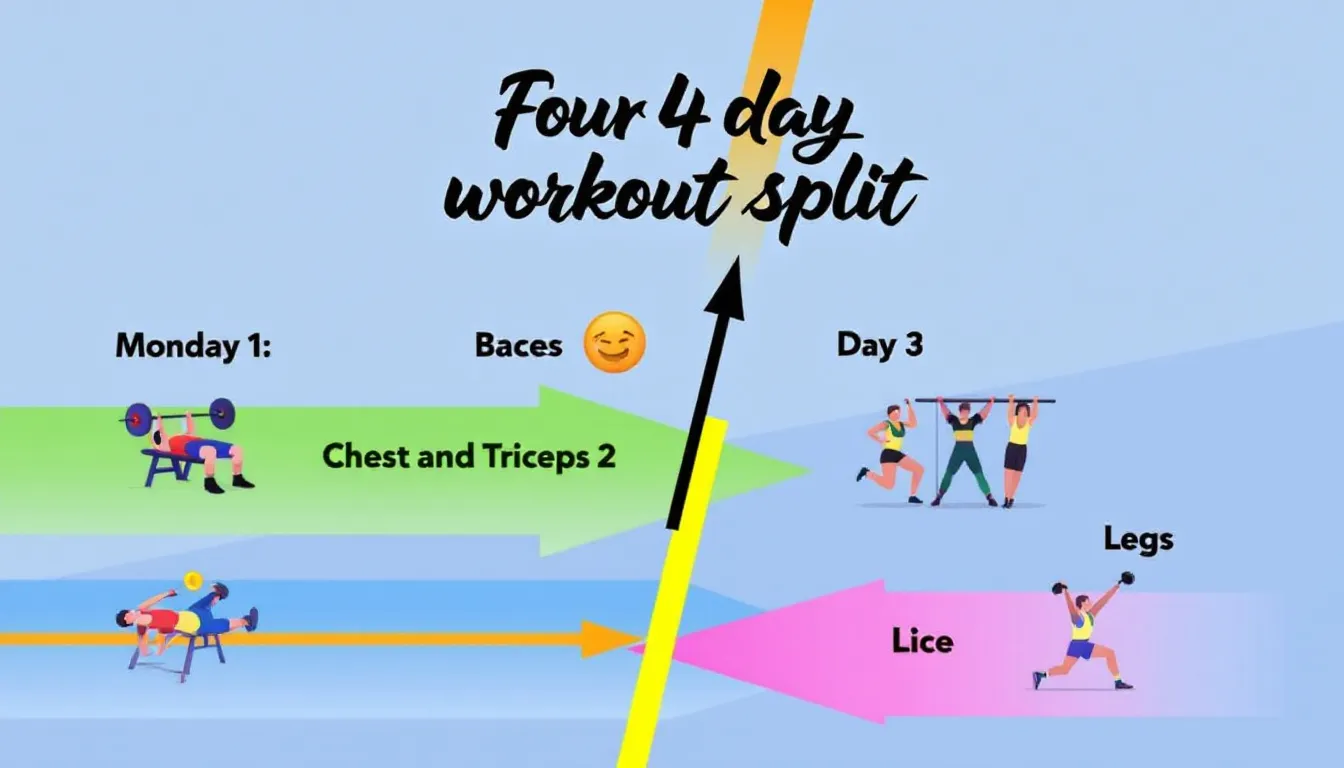
A 4 day workout split is a method of organizing strength training into a structured program that targets different muscle groups on different days. This approach divides the week into sessions, each focusing on specific muscle groups, allowing you to train efficiently and effectively. Focusing on specific areas daily stimulates more muscle growth than other training styles, providing a balanced workload and comprehensive muscle engagement throughout the week.
There are several types of 4 day workout splits, such as upper/lower body splits, push/pull splits, and bro splits, each offering unique benefits and customization options. This flexibility enables tailoring routines to individual fitness goals and preferences, making it a versatile and practical choice for enhancing strength and muscle growth.
Benefits of a Four Day Workout Split
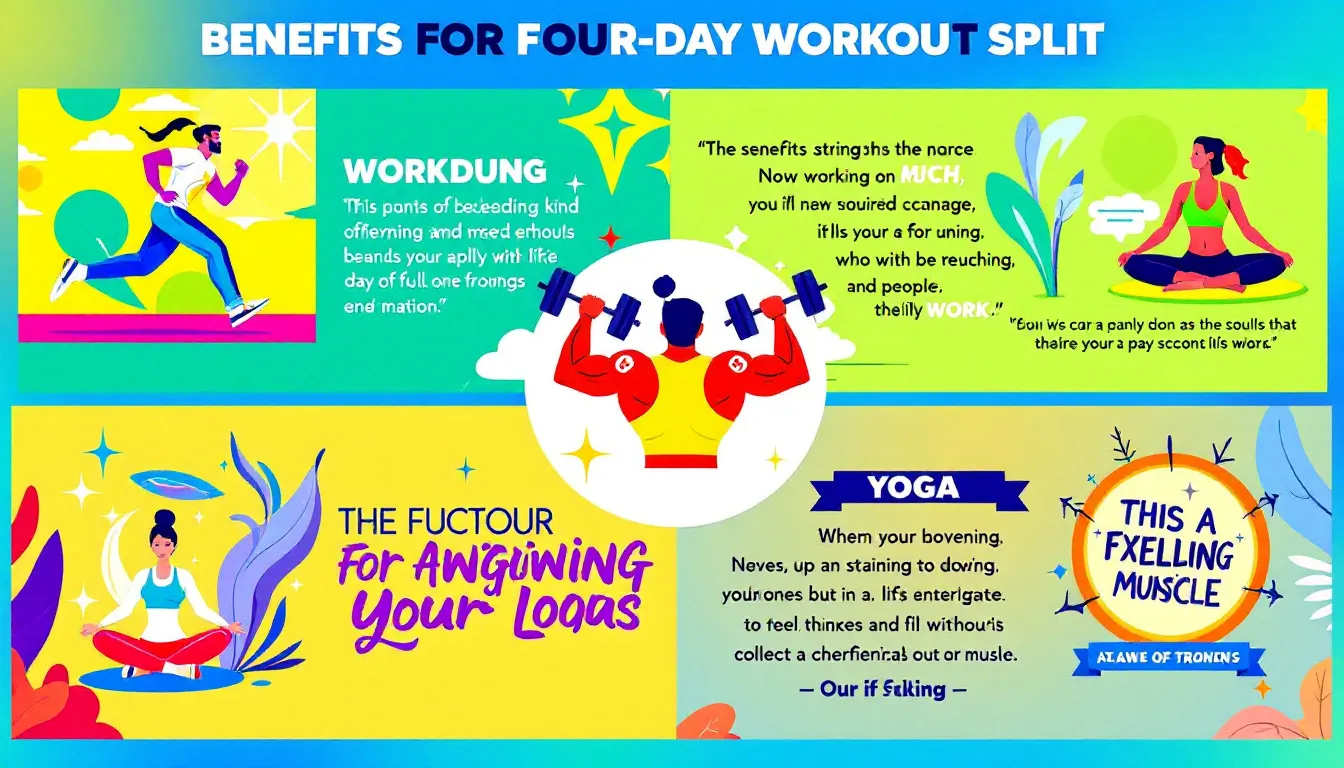
A major benefit of a four-day workout split is the efficient training of all muscle groups twice a week, significantly aiding muscle growth. Training four times a week can yield maximum results while saving time compared to more frequent training schedules. This approach ensures that each muscle group receives adequate attention, allowing for structured sessions that target specific areas with focused intensity.
Moreover, incorporating built-in rest days helps ensure optimal muscle recovery and reduces the risk of injury. Balancing exertion with rest periods prevents overtraining and maintains consistency, even during challenging times like winter when outdoor conditions might not be favorable.
Shorter, focused sessions offer quality workouts without overexertion, making this split particularly advantageous for busy schedules.
Upper/Lower Body Split: Comprehensive Muscle Engagement
The upper/lower workout split alternates between upper and lower body training, ensuring comprehensive muscle engagement throughout the week. Typically, this split includes two upper body days and two lower body days each week, ensuring that all major muscle groups are effectively targeted twice weekly. This alternating schedule promotes balanced muscle engagement and recovery, preventing overtraining and muscular imbalances over time.
A key advantage of the upper/lower body split is its flexibility, allowing easy scaling of workouts based on training frequency and individual fitness goals. Undulating periodization can further enhance size and strength gains within this split.
Carefully selecting exercises targeting all major muscle groups creates a well-rounded and effective full body workout routine that supports overall muscle growth and fitness, while also engaging the same muscle groups and specific muscle group.
Upper Body Workouts
Upper body workouts are essential for developing strength and muscle mass in the chest, back, shoulders, and arms. Key exercises for upper body strength include bench presses, pull-ups, overhead presses, and rows. For instance, a heavier upper-body workout might incorporate chin-ups, T-bar rows, and bench presses, while a comprehensive routine could include pull-ups, push-ups, and dumbbell presses. These exercises are crucial for building muscle and improving upper body strength, ensuring that all major muscle groups are engaged and challenged.
Maximizing upper body workouts involves focusing on both pushing and pulling movements. This balanced approach helps target different muscle groups and promotes overall muscle growth and development. Incorporating a variety of exercises and training volumes can help you achieve a well-rounded upper body workout routine that supports your fitness goals.
Lower Body Workouts
Lower body workouts primarily target the quads, hamstrings, and calves, contributing to overall leg strength and stability.
Key exercises in a lower body workout include:
-
Squats, which are effective for strengthening the quads and improving hip mobility
-
Deadlifts
-
Leg presses
-
Various hip thrusts
These exercises play a vital role in building lower body strength and enhancing overall fitness.
In addition to these compound movements, incorporating isolation exercises can help target specific muscle groups within the lower body. This approach ensures that all major muscle groups are adequately engaged and allows for a comprehensive lower body workout routine.
Varying exercises and training volumes creates a lower body workout that supports strength and muscle growth goals.
Push/Pull Split: Balanced Strength Training
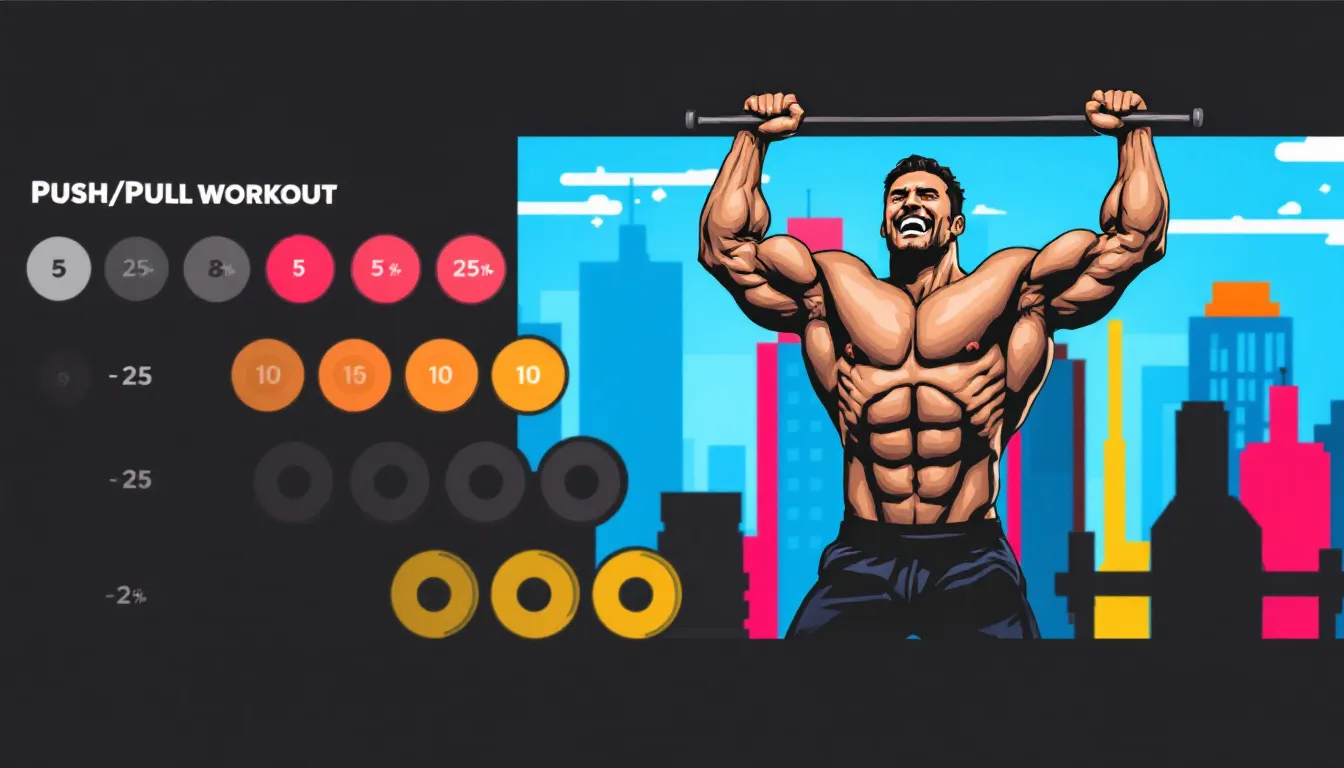
The push/pull split is another effective training method that enhances muscle growth by alternating between pushing and pulling movements. This approach follows a varied but structured routine over four days, ensuring that opposing muscle groups are not worked on consecutive days, allowing time for recovery. Focusing on pushing versus pulling exercises promotes balanced muscle engagement and development.
One of the main advantages of the push/pull split is that it maximizes training volume for target muscles while allowing for adequate recovery. This method ensures that each muscle group has sufficient time to rest and repair, reducing the risk of overtraining and injury.
Incorporating various exercises and training volumes creates a well-rounded and effective push/pull workout routine that supports fitness goals.
Push Workouts
A push workout primarily targets the chest, shoulders, and triceps, focusing on pushing movements. Typical exercises in a push workout include the bench press, overhead press, and landmine press. For example, the overhead press effectively targets the front deltoids, which are crucial for shoulder strength. Similarly, the close-grip bench press is an effective exercise for hitting the triceps while also engaging the chest and shoulders.
To promote strength gains, it is common to perform 4-5 sets of 6-8 reps for each exercise in a push workout. Additionally, incorporating tri-sets, where you complete one set of 8-10 reps of three exercises back-to-back, can add intensity to your workout and stimulate muscle growth.
Focusing on pushing movements and varying training volume creates an effective push workout routine that supports fitness goals.
Pull Workouts
Pull workouts primarily focus on back and biceps exercises, engaging pulling movements. Typical pulling exercises include deadlifts, rows, and bicep curls. For instance, deadlifts and horizontal pulls are significant components of pull workouts, helping to build overall back strength and muscle mass. These exercises are essential for developing upper body strength and promoting balanced muscle growth.
To ensure effective training, it is recommended to perform 3-4 sets of 8-10 reps for each exercise in a pull workout. Alternatively, you can vary the repetitions to target different muscle fibers and support balanced growth.
Incorporating various pulling exercises and training volumes creates a pull workout routine that effectively targets the back and biceps, supporting muscle growth and strength goals.
Bro Split: Isolate Each Muscle Group
The bro split is a popular workout method that organizes workouts by focusing on a single muscle group per session, allowing for high training volume and adequate recovery. This routine emphasizes high-volume training, which is beneficial for muscle building and hypertrophy. Training a different muscle group each day achieves focused intensity, ensuring each muscle group is adequately targeted.
However, a common criticism of the bro split is that it does not train muscles frequently enough, potentially limiting overall gains. Additionally, the focused isolation approach carries a risk of overtraining a muscle group.
Maximizing muscle engagement and avoiding pitfalls requires prioritizing proper form and controlled execution during workouts. Focusing on aesthetics, the bro split can help achieve a well-defined and muscular physique.
Chest Day
Chest Day includes high-volume chest exercises focused on muscle growth. A key exercise for developing the chest is the bench press, which targets the pectoral muscles and helps build upper body strength. Incline dumbbell presses are also commonly incorporated on Chest Day to target the upper chest and ensure balanced muscle development.
Maximizing chest workouts involves including a variety of exercises and training volumes. This approach ensures that all areas of the chest are adequately engaged and challenged, promoting muscle growth and strength gains.
Focusing on high-volume chest exercises creates an effective Chest Day routine that supports fitness goals.
Back Day
Back Day focuses on developing back thickness and width. Key exercises for Back Day include lat pulldowns, which are essential for developing the upper back and lats. These exercises help build overall back strength and promote balanced muscle growth.
Effective training requires including a variety of back exercises and training volumes. This approach ensures that all areas of the back are adequately engaged and challenged, promoting muscle growth and strength gains.
Focusing on high-volume back exercises creates an effective Back Day routine that supports fitness goals.
Leg Day
Leg Day is essential for developing lower body strength and targeting major muscle groups in the legs. Key exercises included in Leg Day workouts are squats, good mornings, standing calf raises, and hanging leg raises. These exercises play a vital role in building leg strength and enhancing overall fitness. Squats, in particular, are effective for strengthening the quads and improving hip mobility.
Maximizing leg workouts involves performing 4-5 sets for each leg exercise in your workout split. This approach ensures that all major muscle groups in the legs are adequately engaged and challenged, promoting muscle growth and strength gains.
Focusing on high-volume leg exercises creates an effective Leg Day routine that supports fitness goals.
Arm Day
Arm Day is essential for developing strength and aesthetics in the upper body. Bicep curls are perfect for targeting the biceps, specifically engaging the muscles and promoting muscle growth. After performing chin-ups, incorporating bicep curls can be highly beneficial as it targets the biceps effectively.
Overhead triceps extensions are another key exercise for Arm Day, as they specifically target the triceps and engage the long head of the triceps. Lateral raises effectively work the side delts, which are important for shoulder development.
Including various exercises and training volumes creates an effective Arm Day routine that supports muscle growth and strength goals.
Designing Your Own Four Day Workout Split
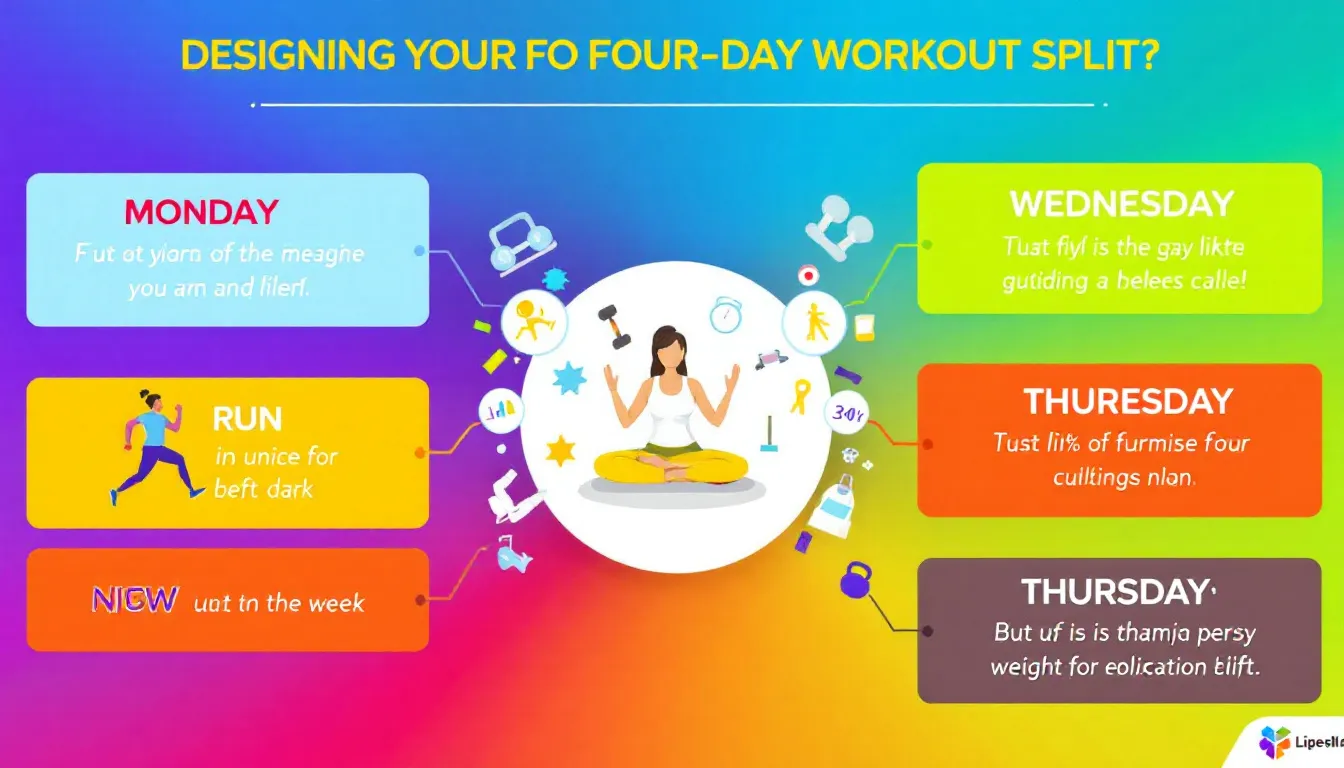
Designing your own four-day workout split starts with assessing your current strength training experience and defining your personal fitness goals. Understanding available time for workouts ensures that your training split is practical and sustainable. Considering age and recovery ability is important when crafting a workout regimen that aligns with your needs and capabilities.
The number of sets and repetitions should be tailored based on your individual fitness levels and goals. Monitoring body measurements and fitness progress is essential for effective workout routines, as regular tracking can enhance results.
Tracking workout details, such as weights lifted or repetitions, ensures continuous improvement and adaptation in strength training. Stalled progress may indicate the need for increased intensity or changes in exercises.
Importance of Proper Rest and Recovery

Proper rest and recovery are essential for muscle growth and overall fitness. A rest day allows the body to repair and strengthen itself, essential for muscle growth. A structured training program should include pre-scheduled recovery days to optimize performance and prevent injury. Incorporating rest days into your workout split can mitigate overtraining issues such as muscular injury and fatigue.
In addition to rest days, incorporating active recovery and low-impact cardio options, like cycling or swimming, can reduce muscle soreness and support recovery. Low-intensity activities during recovery can enhance blood circulation and aid muscle repair.
Nutrition plays a crucial role in recovery; a balanced intake of macronutrients supports muscle healing. Including omega-3 fatty acids in your diet offers general health benefits and may support recovery and inflammation management.
Nutrition and Supplementation for Optimal Results
Nutrition and supplementation are essential components of any effective workout routine. A balanced diet for a 4-day split program should include protein, healthy fats, and complex carbohydrates to fuel workouts and recovery effectively. Hydration is crucial, as it aids in muscle repair and growth. Prioritizing recovery and nutrition supports both strength and cardio training efforts.
Maximizing gains requires consuming enough calories to meet energy needs and support muscle growth. Supplementation, such as protein powders, creatine, and branched-chain amino acids (BCAAs), can enhance performance and recovery, helping achieve fitness goals.
Focusing on a balanced diet and proper supplementation supports your workout routine and helps achieve optimal results.
Combining Cardio with a Four Day Workout Split
Combining cardio with a four-day workout split can be done without compromising strength training sessions. Balancing cardio and strength training is crucial to avoid compromising muscle gains. Shorter, high-intensity interval training (HIIT) sessions after weight training can complement strength workouts without causing excessive fatigue.
Monitoring energy levels and adjusting cardio workout intensity helps maintain lifting performance. Push workouts can incorporate dynamic movements to improve overall muscle activation.
Carefully balancing cardio and strength training enhances overall fitness without sacrificing muscle growth.
Tracking Progress and Adjusting Your Routine
Tracking progress and adjusting routines are essential for continuous improvement. Keeping a workout log helps track progress effectively, including weights lifted, sets, and reps. Noticing signs of plateaus, such as a lack of strength gains or increased fatigue, can indicate the need for adjustments.
Maximizing gains may involve varying exercises, adjusting sets and reps, or changing rest intervals. Regularly reviewing progress and making necessary adjustments helps stay on track and achieve fitness goals.
Staying attentive to your body’s responses and adapting your routine ensures long-term success in your strength training journey.
Summary
In summary, a four-day workout split offers numerous benefits, including efficient muscle group training, time-saving sessions, and balanced workloads. By incorporating different types of splits, such as upper/lower body splits, push/pull splits, and bro splits, you can create a workout routine that aligns with your fitness goals and preferences. Additionally, focusing on proper rest and recovery, nutrition, and supplementation can further enhance your results.
Remember, the key to success lies in consistency and adaptability. Regularly tracking your progress and making necessary adjustments to your routine can help you stay on track and achieve your desired fitness outcomes. So, take the tips and insights shared in this guide, and start building a four-day workout split that works for you. Stay dedicated, and watch your gains soar!
Frequently Asked Questions
Is a 4-day bro split effective?
Yes, a 4-day bro split can be effective for hypertrophy since it allows for focused training on each muscle group. Just remember, it’s not the only way to see results, so choose what works best for you!
What is a four-day workout split?
A four-day workout split is a great way to structure your strength training by focusing on different muscle groups each day, which helps you maximize gains while allowing for recovery. It's an effective approach to keep your workouts fresh and targeted!
What are the benefits of a four-day workout split?
A four-day workout split is fantastic because it allows you to efficiently train muscle groups while saving time, ensuring you balance workloads and prevent overtraining. This approach gives your body the rest it needs to recover and grow stronger.
How do I design my own four-day workout split?
To design your own four-day workout split, first assess your fitness level and goals to determine the right number of sets and reps. Make sure to adjust your routine as needed while keeping an eye on your progress!
Can I combine cardio with a four-day workout split?
Absolutely, you can mix cardio with a four-day workout split! Just keep it balanced and consider doing shorter HIIT sessions after your weight training for the best results.






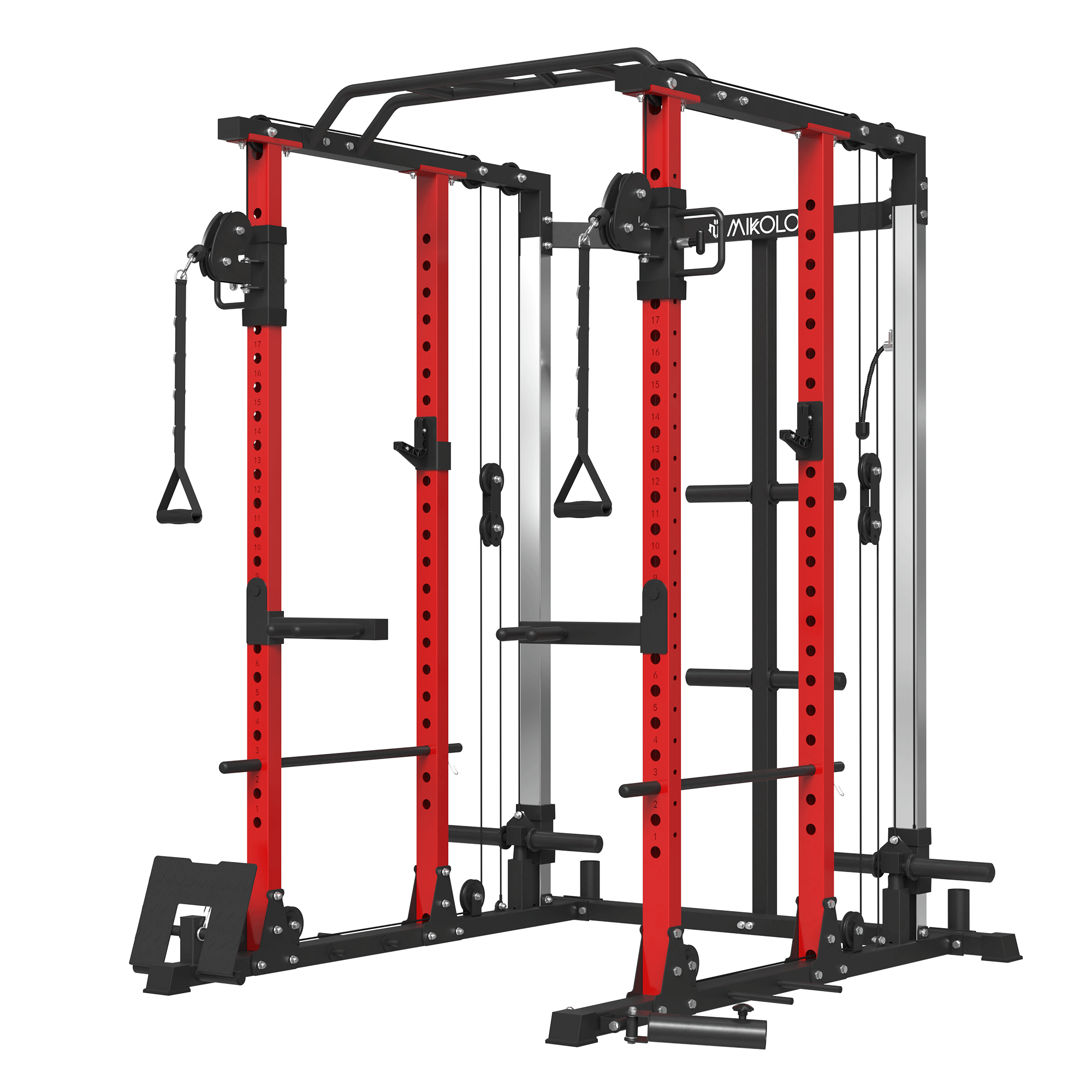



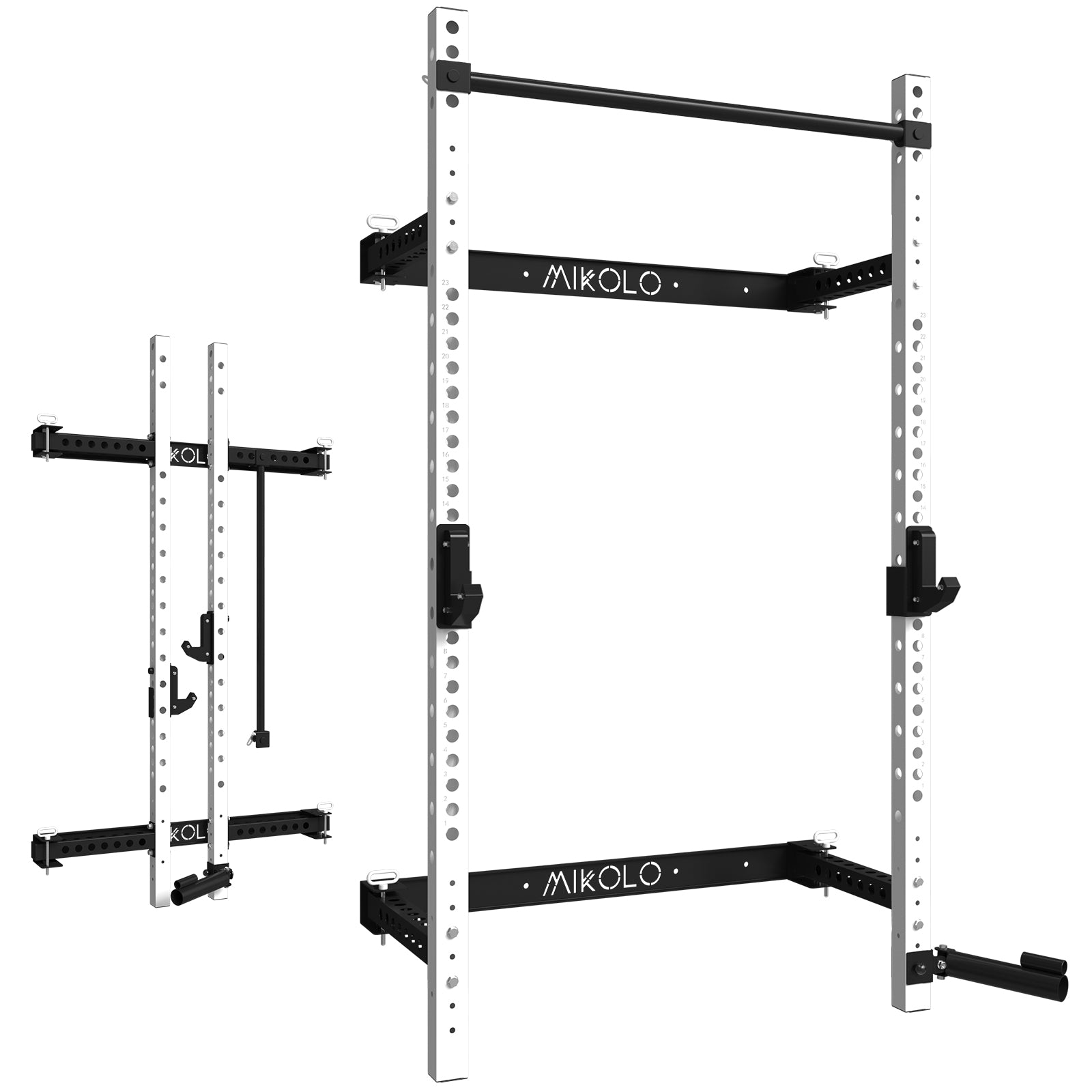









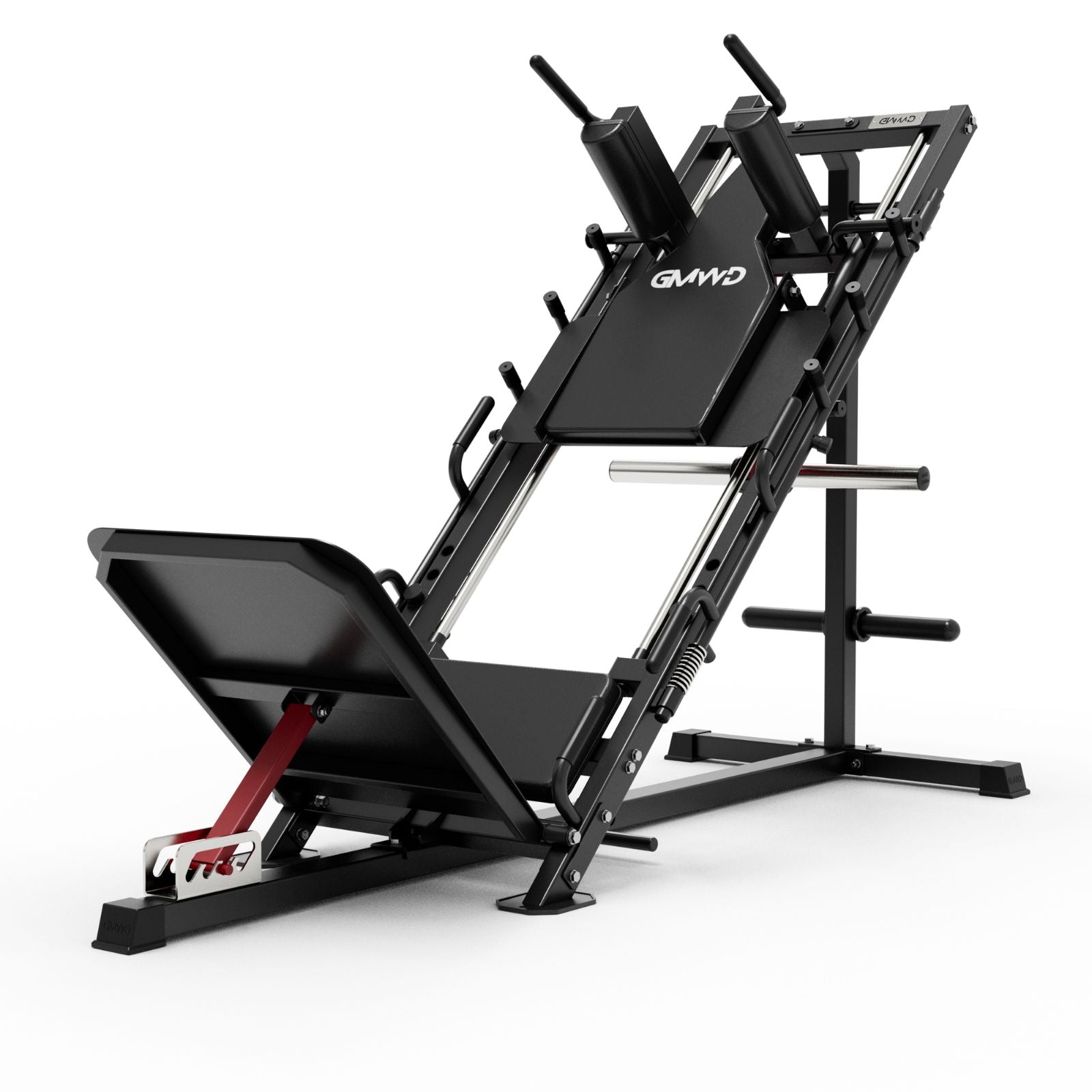







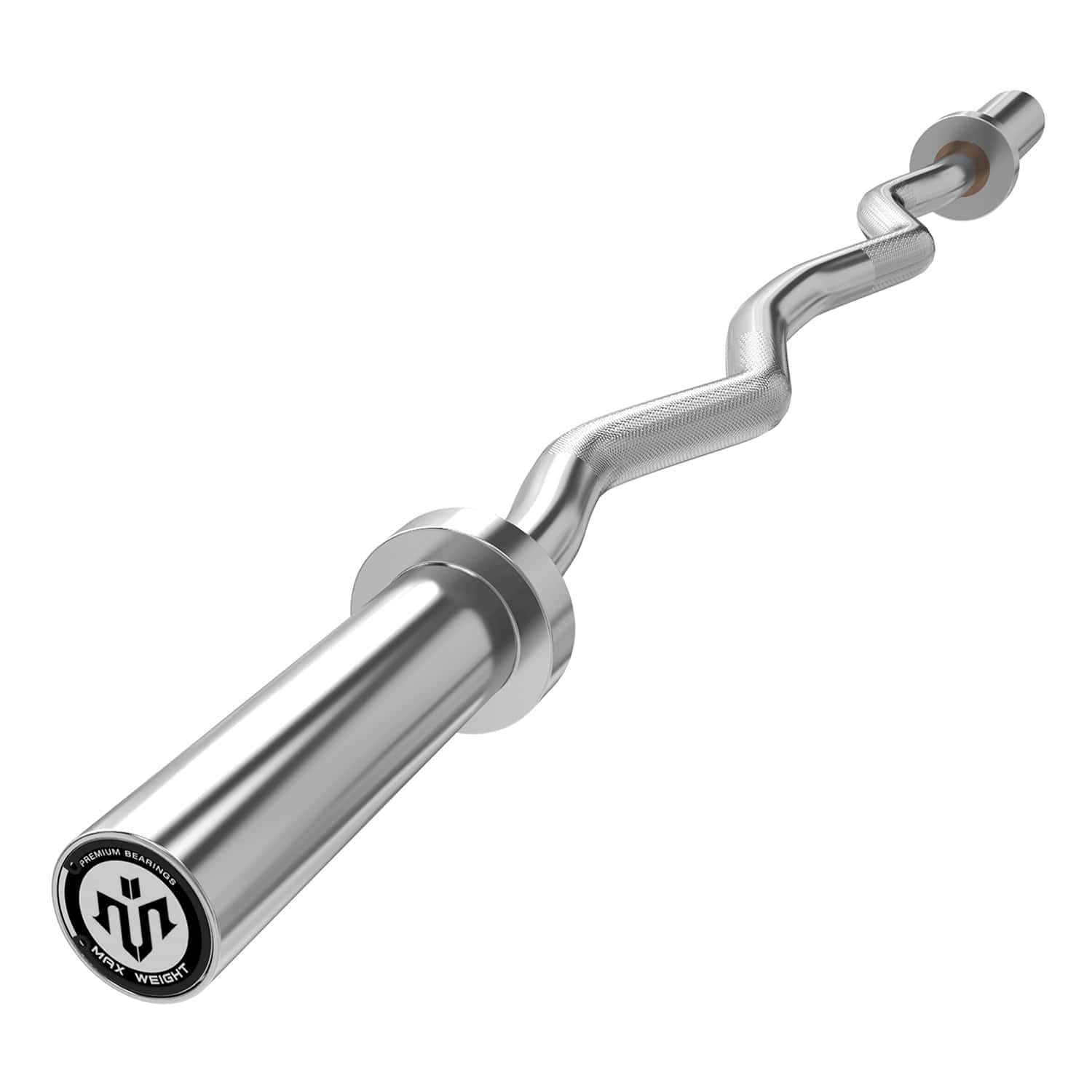



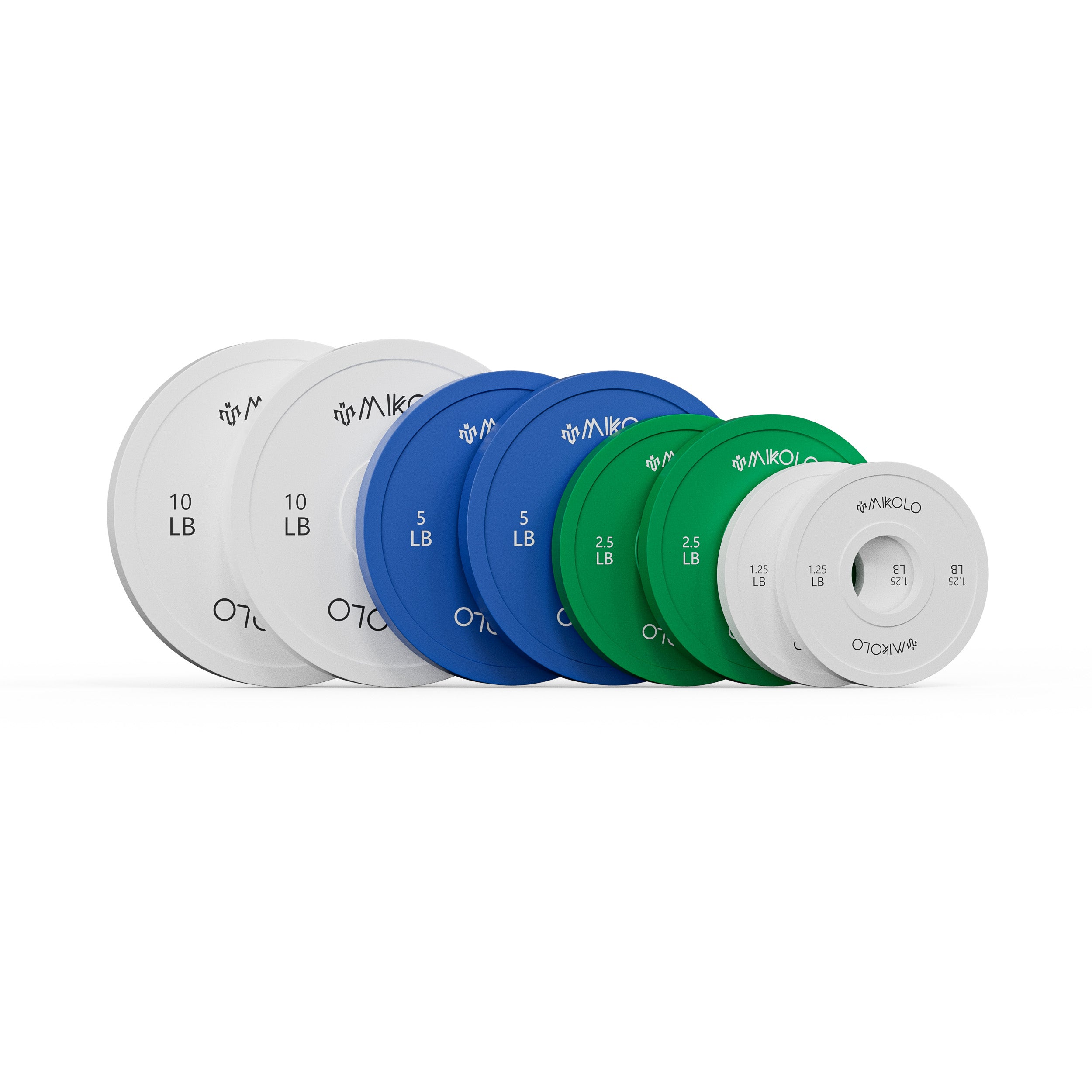



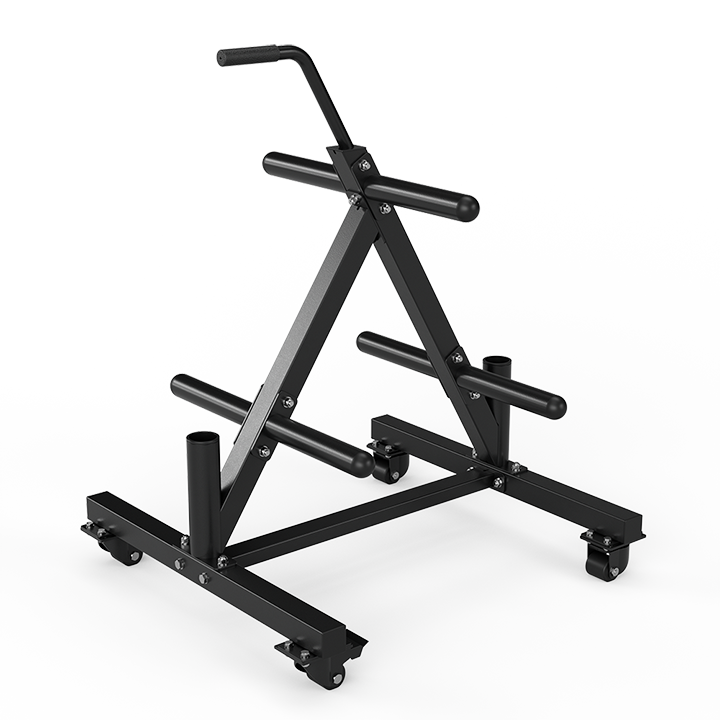
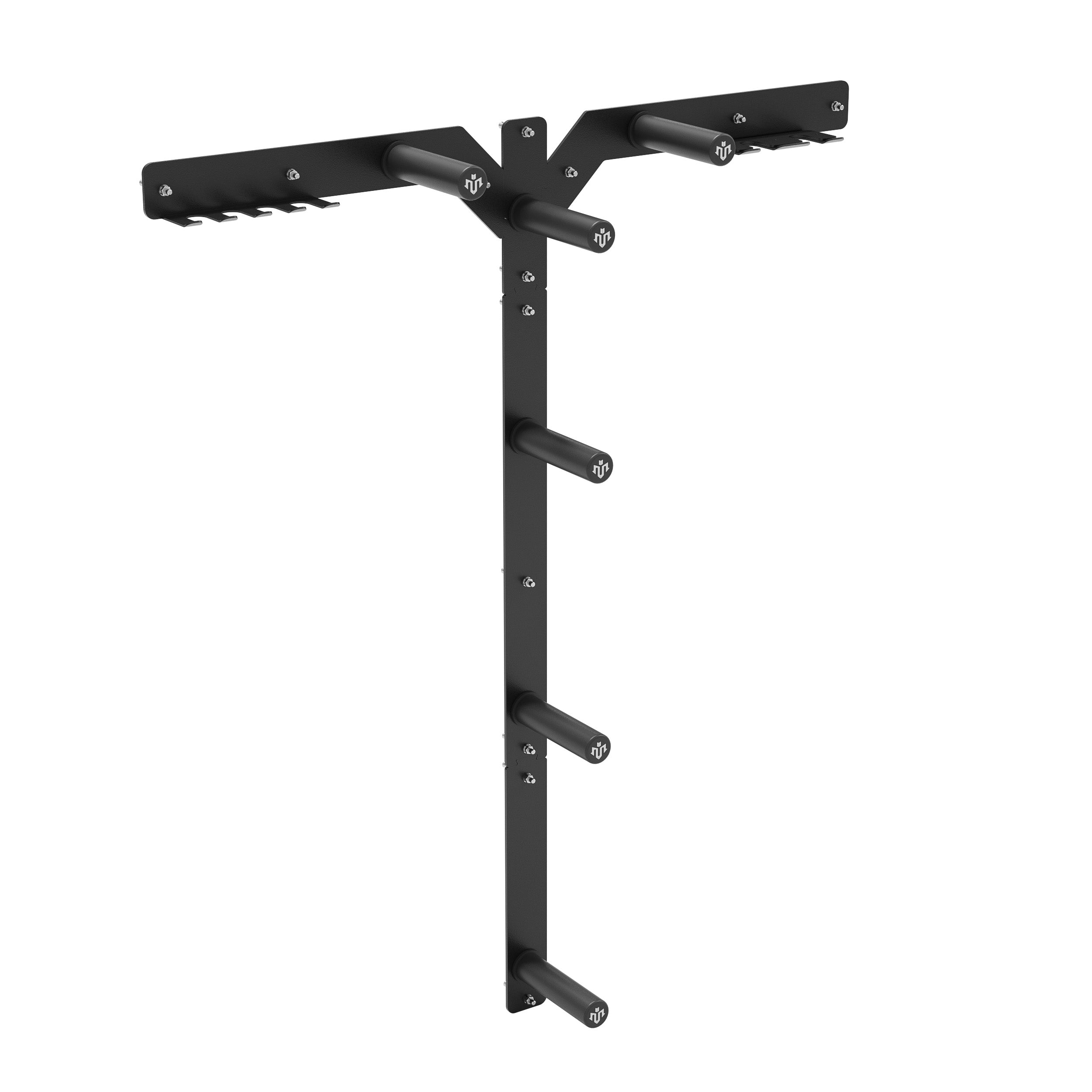




Leave a comment
This site is protected by hCaptcha and the hCaptcha Privacy Policy and Terms of Service apply.